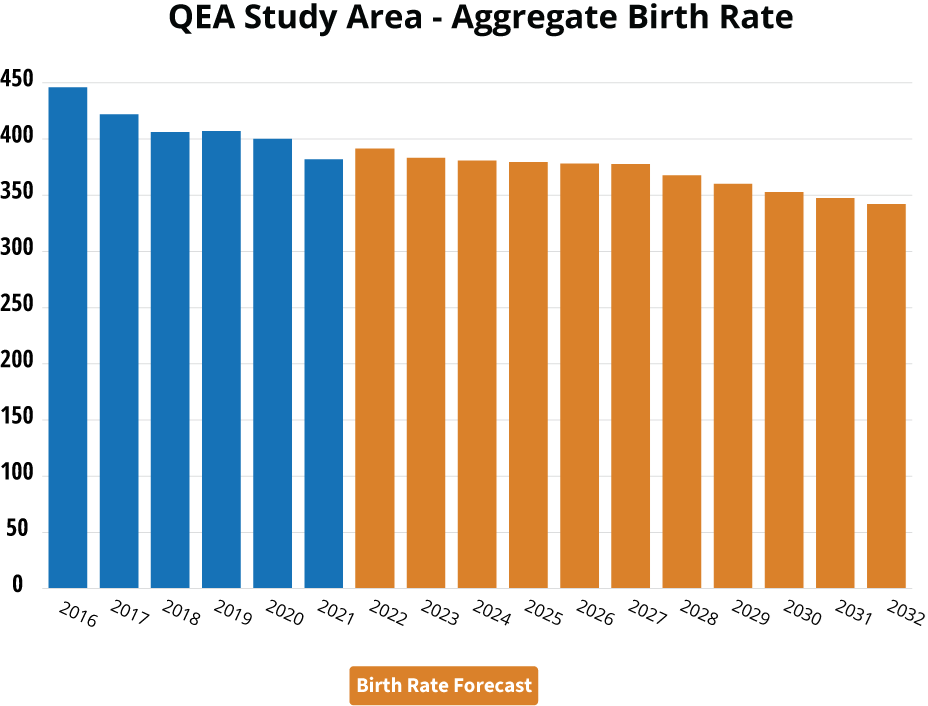QEA forecast considerations
When forecasting future enrolment trends, the District looks at the birth rate and youth population (5-17 years old) in Vancouver, as well as how many families with school aged children move out of the city, also known as migration rate. The birth rate and migration rates are strongly correlated youth population, which in turn forecasts school enrolment trends. Additionally, another factor that impacts enrolment is the capture rate, which is the portion of school aged children residing in Vancouver and attending a VSB school instead of an independent school. The District’s capture rate in the study area has remained stabled for many years averaging at about 89%. The capture rate at schools in UBC/UEL is higher than the remainder of the schools in the study area.
Birth rate in the study area
Birth rate – the number of births per year - is a statistic gathered by Vital Statistics BC. Historic changes in the number of births are an important factor impacting past, present, and future enrolments. The number of births have continued to decline, aligning with the enrolment trend in the QEA area. Between 2012 and 2022 the number of births per year in the study area declined by 27 per cent.

Migration rate in the study area
Migration trends vary between catchments and age groups in the study area. The combined net result of migration in the eight school catchments in the study area from 2018-2022 was an average increase of 69 children aged 1-17 per year.

